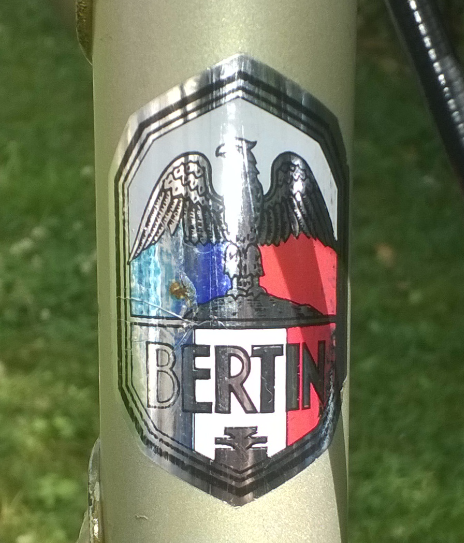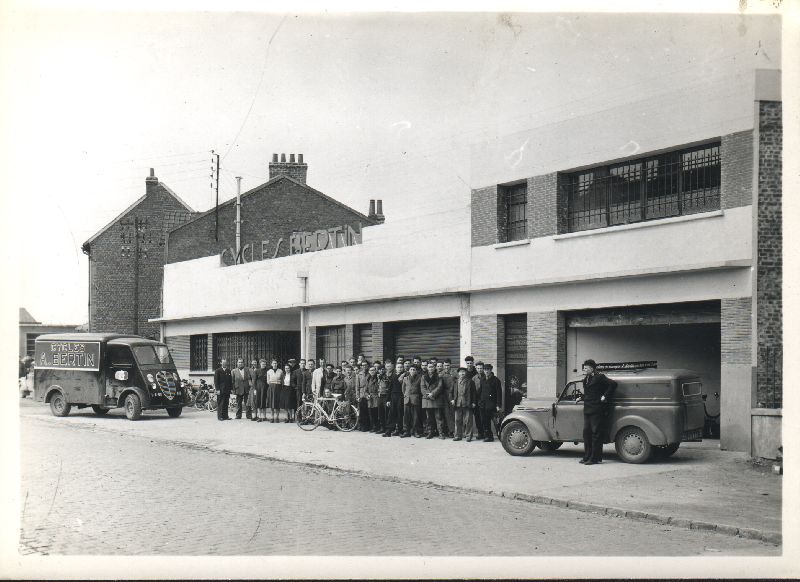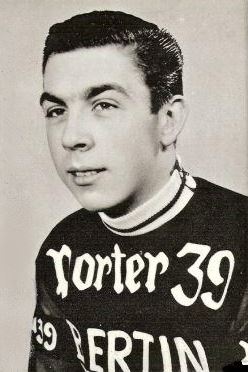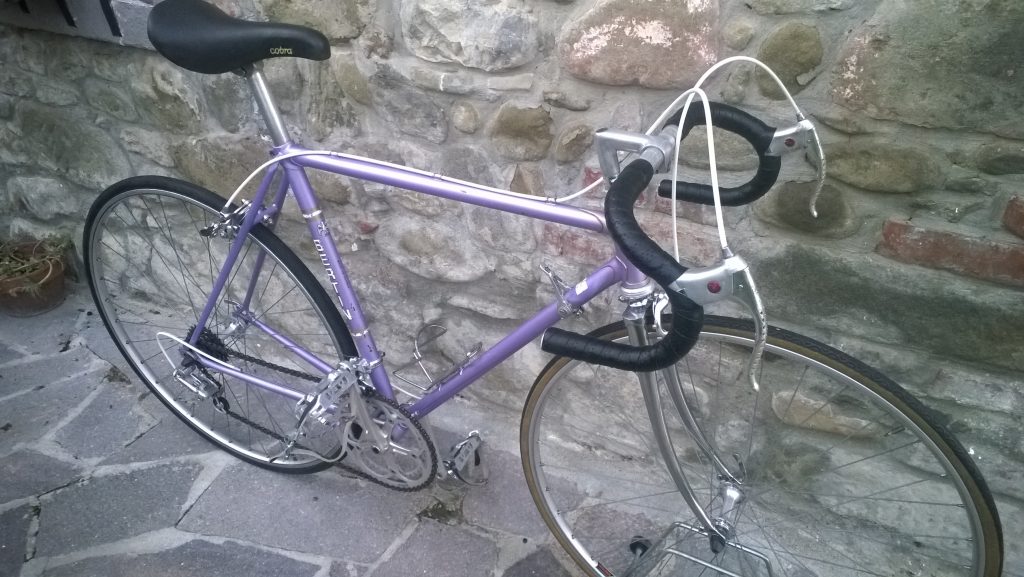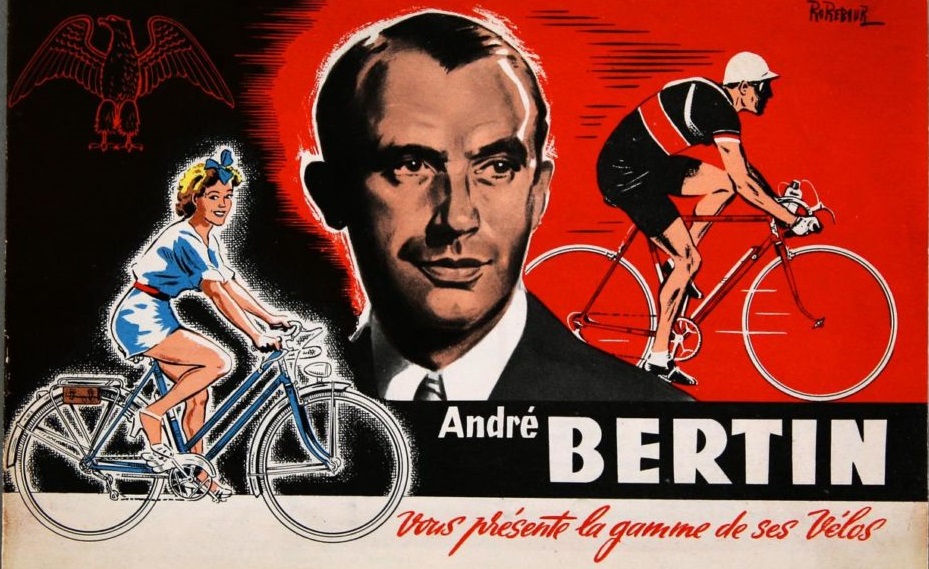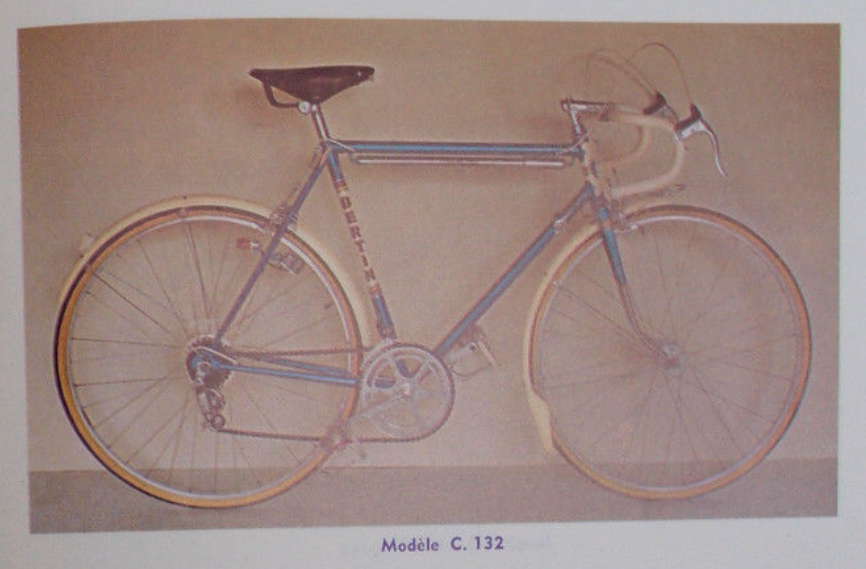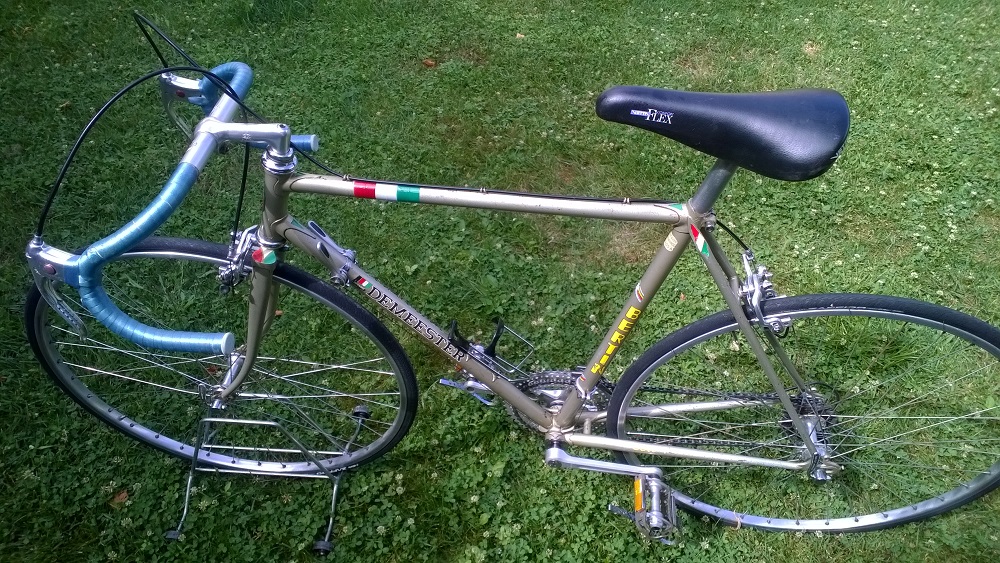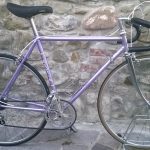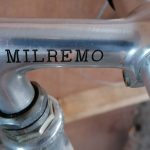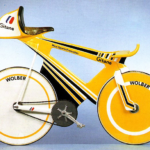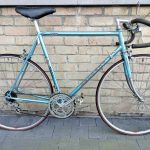In the street scene and on the many online sales sites you see them occasionally appear: Bertin racing bikes. This disappeared French bicycle brand, founded by André Bertin, had both a factory in France and Belgium and the bicycles from France differed from the Belgian ones (see further in the article for more info).
History Bertin bicycles
André Bertin was a French former professional cyclist from 1935 to 1937. In those years he mostly drove six days on the track by the team France Sport – Wolber which also included Antonin Magne, two-time Tour de France winner and world champion in 1936. Bertin was one of the helpers of Magne.
It was during this period that Bertin established a shop in St Laurent Blangy in Northern France for the distribution of bicycle and motorcycle parts. After WWII, André Bertin started his own production of bicycles under the name Cycles A. Bertin. From the 50s, the brand got the well-known logo with the eagle and French flag.
In 1957, in collaboration with the Briton Ron Kitching, the Milremo brand was founded that focused on bicycle components. The name Milremo was derived from the Italian cycling race MILano San REMO. The vast majority of these components were purchased from other well-known manufacturers and then provided with the Milremo logo. This is also the reason why many Bertin bicycles are equipped with Milremo pads (more information about the brand Milremo).
Bertin also sponsored several semi-pro and pro teams in the 1960s together with Porter 39, a beer brewer. The most famous cyclists who rode a Bertin bicycle were Roger Decock, winner of the Tour of Flanders in 1952 and Patrick Sercu, still the record holder for the number of six days on the track. By the way, Sercu became world champion on the track in 1964, which allowed Bertin to place the world champion flag on their frames.
In 1970 Bertin started as the only French importer of Shimano parts, which resulted in many Bertin bicycles being equipped with Shimano from then on. The Bertin C290 below, from the 80s, is equipped with the Shimano Arabesque, one of Shimano's most beautiful groups.
André Bertin was born in the French region Nord Pas De Calais only 50 km from the Belgian border and apparently also had family living in Belgium. It was therefore not long before a Bertin Belgium department was set up in Poperinge. There is still a shop in Poperinge that markets bicycles under the name Bertin. Whether this is distant relatives I have not yet found out.
This is the reason why there are still quite a few Bertin bicycles in Flanders. But with the boom of the bicycle industry in the 1970s, Bertin bicycles were also exported to the US and even Canada. Many bicycles are said to have been produced in Morocco.
In the 1990s, things went downhill quickly with both the Bertin bicycle brand and the Milremo side project. In 1990 the collaboration with Shimano ended and in 1993 the company was sold to the holding Cibo Participations. A year later André Bertin died at the age of 81.
Belgian and French Bertin Bicycles
Although they both belonged to the same family, the Bertin bikes made in Belgium were different from the French ones. Below are some differences:
- The Belgian were powder-coated while the French were wet-coated
- The French used the following components: Milremo, Shimano, Reynolds tubes as opposed to the Belgian ones: Mafac, CLB, Weinmann, Ishiwata tubes, Ringo Sakae. This presumably to produce cheaper bicycles.
- The Belgian decals were more detailed and the front fork and some lugs were painted in 3 colors.
If you want to learn more about Bertin cycling, you can take a look at the site bertinclassiccycles.wordpress.com where you can also find a lot of models

